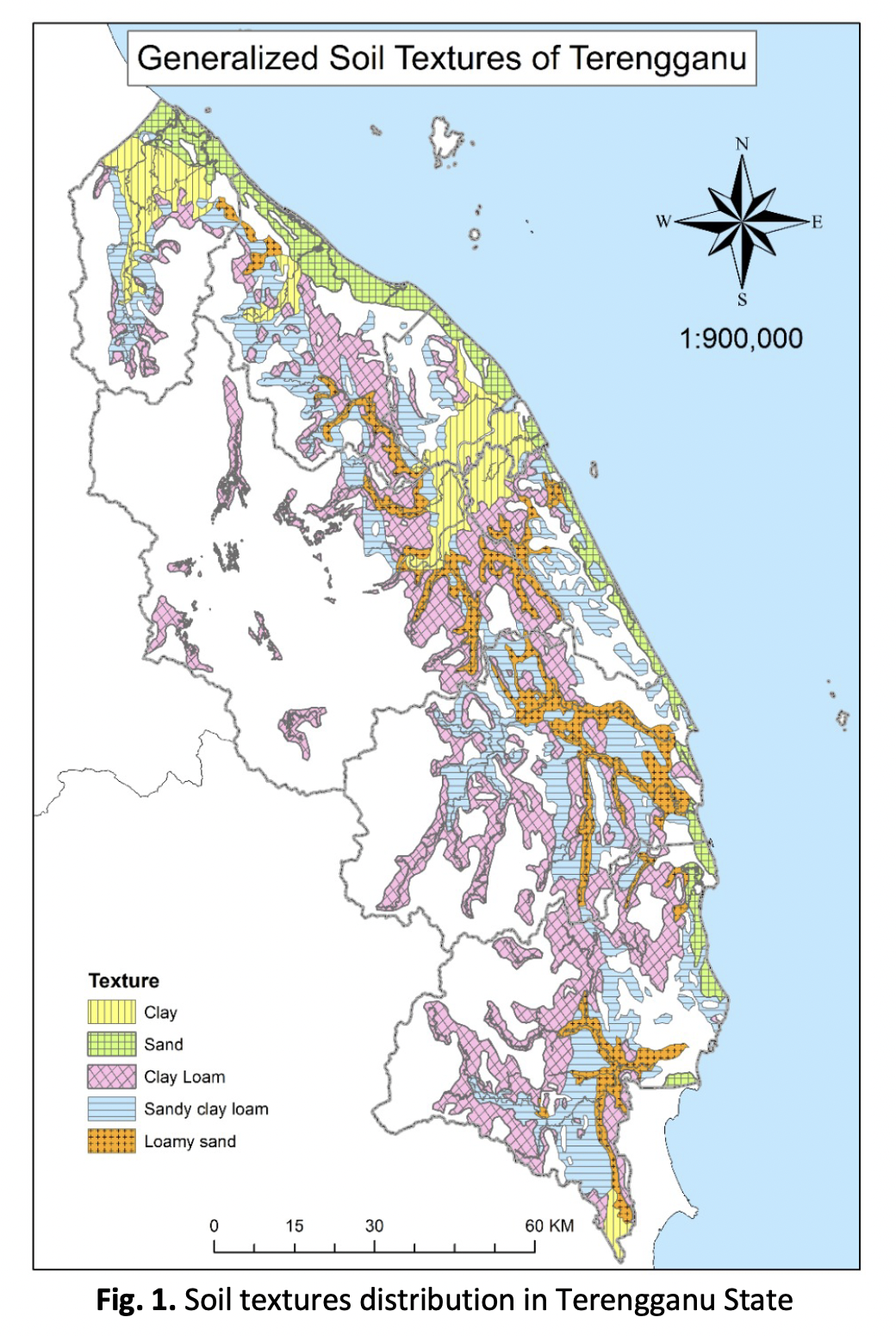The Most Likely Flooded Soil in Terengganu State During Historically Greatest Rainfall Intensity
DOI:
https://doi.org/10.37934/araset.41.2.152163Keywords:
Water flux in soil, Rainfall intensity on soil, Terengganu flood management, Saturated soilAbstract
Water infiltration in the soil is an essential topic for investigation because soil fully saturated with water forms standing water that leads to flooding on top of the soil. Soil investigation is vital for agricultural study due to the necessity to know soil carrying capacity in holding water, field capacity, and also the soil temperature for biological activities and chemical reactions. However, human urbanization and expansion into previously unexplored soil areas could lead to unnecessary environmental stress, such as floods. Floodwater forms when the rainfall intensity exceeds soil water infiltration. The flood event is crucial since it affects the human livelihood and facility damages. Therefore, a good understanding of soil hydraulic water infiltration helps better understanding the cause of flood occurrence. The current study examines the soil series in Terengganu state with its soil properties concerning the soil water characteristics curve, which indicates the soil's ability to absorb and allow water movement in the ground. The equation used was the improved Richards’ equation that can be applied to examine the standing water or floodwater impacts on water infiltration. Also, the unsaturated soil moisture movement conditions can be investigated. The simulation equation verifies with benchmark datasets that was solved on Richards’ equation using a different numerical method. The twelve-soil series of Terengganu state subjected to water infiltration study subjected to flooded conditions, by exposing the soil to the highest rainfall identified in the history of Kuala Terengganu from 1985 to early 2023. The results reveal Jambu, Rhu Tapai and Rudua soil series' water infiltration rate was greater than the rainfall intensity, whereas other soil series could not accommodate the rainfall intensity. Thus, other soil series areas will likely encounter flooded conditions when exposed to heavy rainfall, as has occurred in history.
Downloads




























